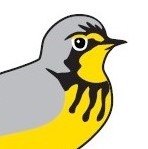
Pine Grosbeak Photo: Candace Trost
Winter finch “irruption” will be a highlight for many
24 January 2019 (New York, NY, Ithaca, NY, and Port Rowan, ON) — The 22nd Great Backyard Bird Count (GBBC) will take place from Friday, February 15 through Monday, February 18. Volunteers from around the world are invited to count the birds they see for at least 15 minutes on one or more days of the count, then enter their checklists at birdcount.org. Anyone with internet access can participate, no matter what their skill level—it’s a great family activity, too.
In the United States and Canada, 2019 bird lists are more likely to include sightings of winter finches and grosbeaks that are moving farther south than usual in what’s called an “irruption.” This type of movement is often sparked by poor cone, seed, and berry crops in parts of Canada.
“This year is a very exciting one for backyard birders in the East, headlined by the largest Evening Grosbeak movement in at least two decades,” says the Cornell Lab of Ornithology’s Marshall Iliff, a leader of the eBird program. “From Atlantic Canada to North Carolina, these colorful feeder visitors have been making a splash.”
Although seed crops were better in western Canada, eBird maps still show significant number of Evening Grosbeaks are now being reported in the West all the way down to the border with Mexico. eBird collects bird observations globally every day of the year and is the online platform used by the GBBC.
This also an above-average year for Red Crossbills, Common Redpolls, Pine Grosbeaks, Common and Hoary Redpolls, and Red-breasted Nuthatches.
“The Great Backyard Bird Count is a great way for all bird watchers to contribute to a global database of bird populations,” says Dr. Gary Langham, vice president and chief scientist for the National Audubon Society. “Participants in the Great Backyard Bird Count help scientists understand how things like climate change are impacting bird populations so we can better inform our conservation efforts.”
During the 2018 count, bird watchers from more than 100 countries submitted more than 180,000 bird checklists reporting a record 6,456 species–more than half the known bird species in the world.
“With the finch irruption this year, we’re hoping for record bird numbers and another record-breaking year for Canadian participation,” says Jon McCracken, Bird Studies Canada’s National Program Director. “In search of a bit of relief from our cold winters, many Canadians become ‘snow birds’ at this time of year, and spend a bit of time birding somewhere warm. While I always strongly encourage counts in our own snowy Canadian backyards, don’t forget that you can participate anywhere in the world. Last year, I did my count in Florida’s Corkscrew Swamp, and had a fantastic day.”
To learn more about how to take part in the Great Backyard Bird Count, visit birdcount.org. The Great Backyard Bird Count is a joint project of the Cornell Lab of Ornithology and the National Audubon Society with partner Bird Studies Canada and is made possible in part by founding sponsor Wild Birds Unlimited.
# # #
Editors: See the winners of the 2018 GBBC Photo Contest. If you find a winner from your coverage area, please let us know if you would like a copy of the image for web or print (if high resolution is available).
Other media images available here.
Contacts:
- Pat Leonard, Cornell Lab of Ornithology, (607) 254-2137, pel27@cornell.edu
- Kerrie Wilcox, Bird Studies Canada, (519) 586-3531 ext. 134, kwilcox@birdscanada.org
- Nick Gonzalez, Audubon, (212) 979-3100, media@audubon.org

